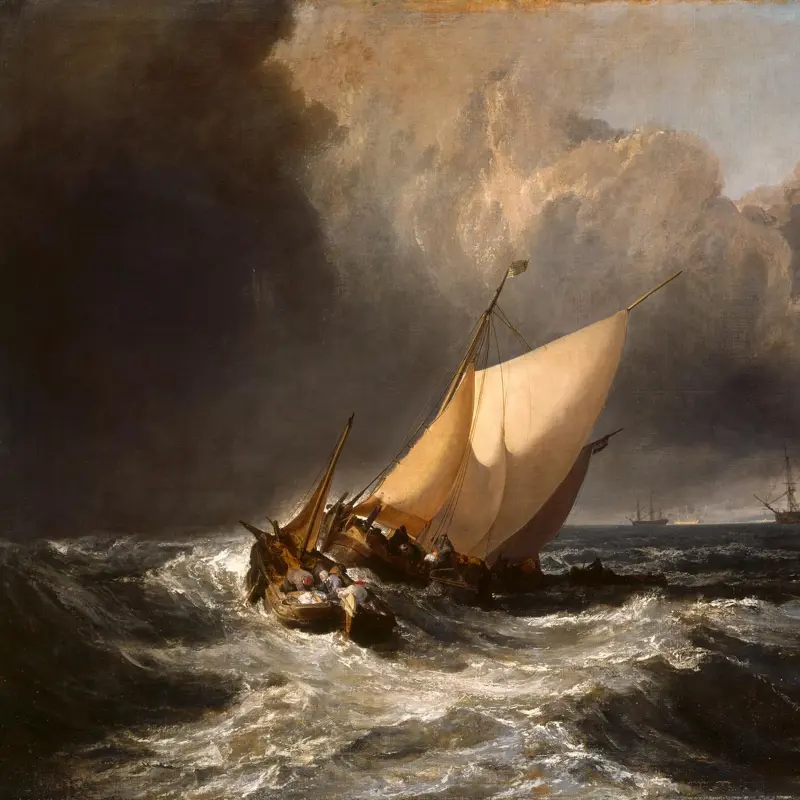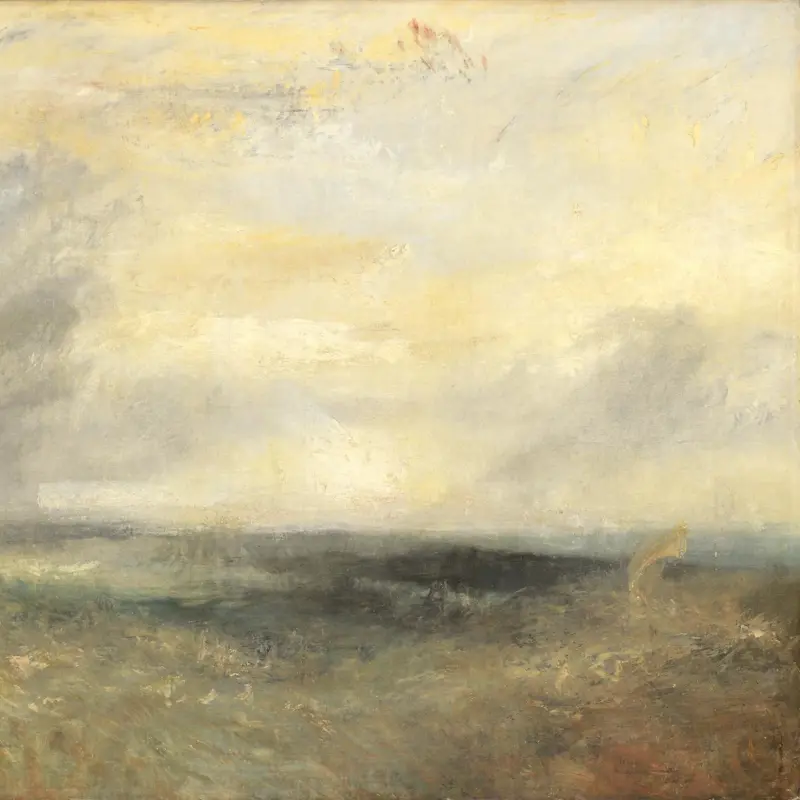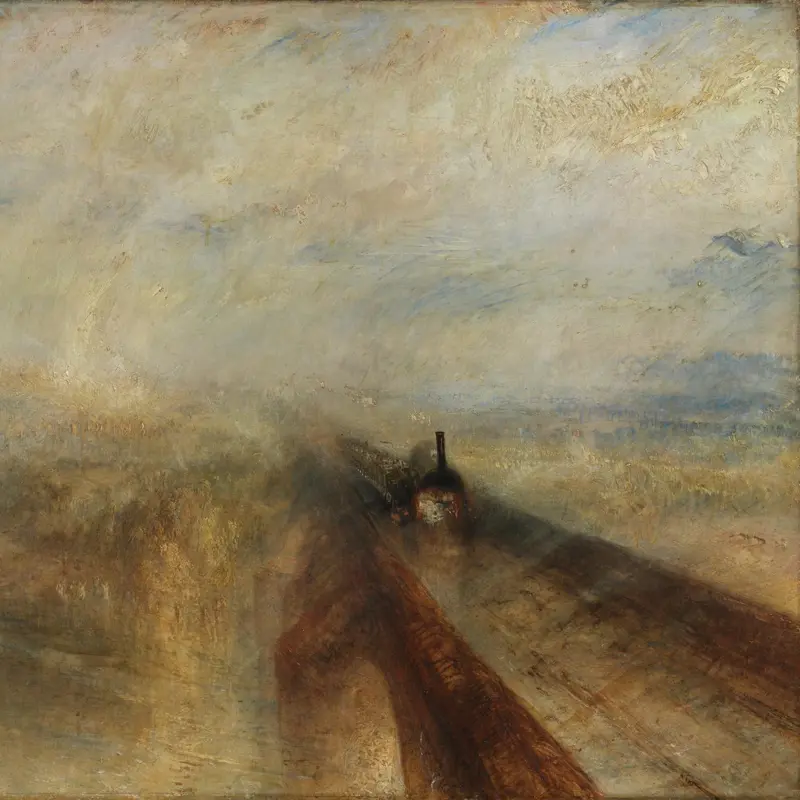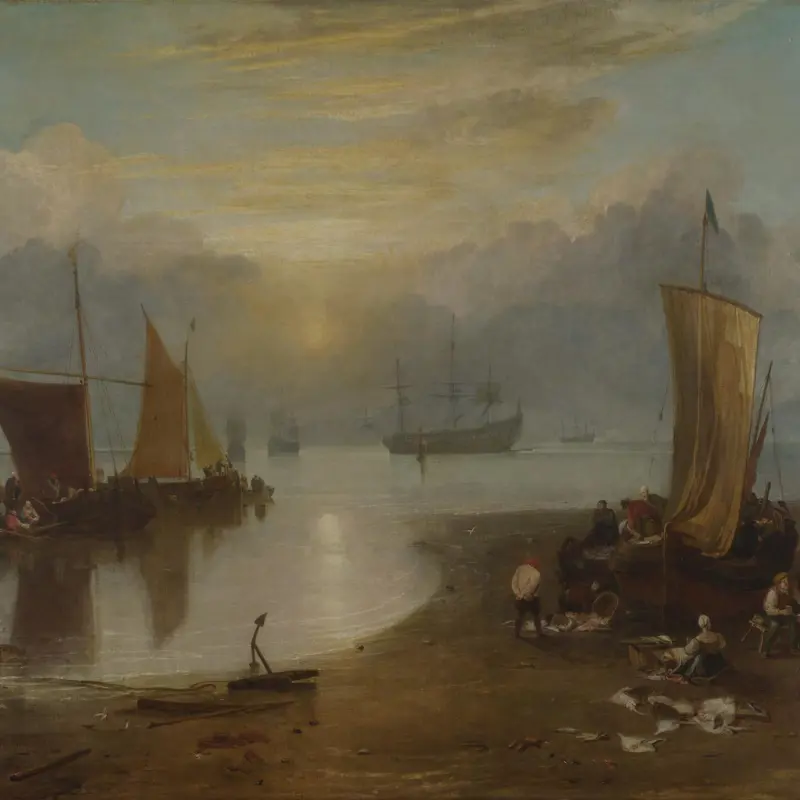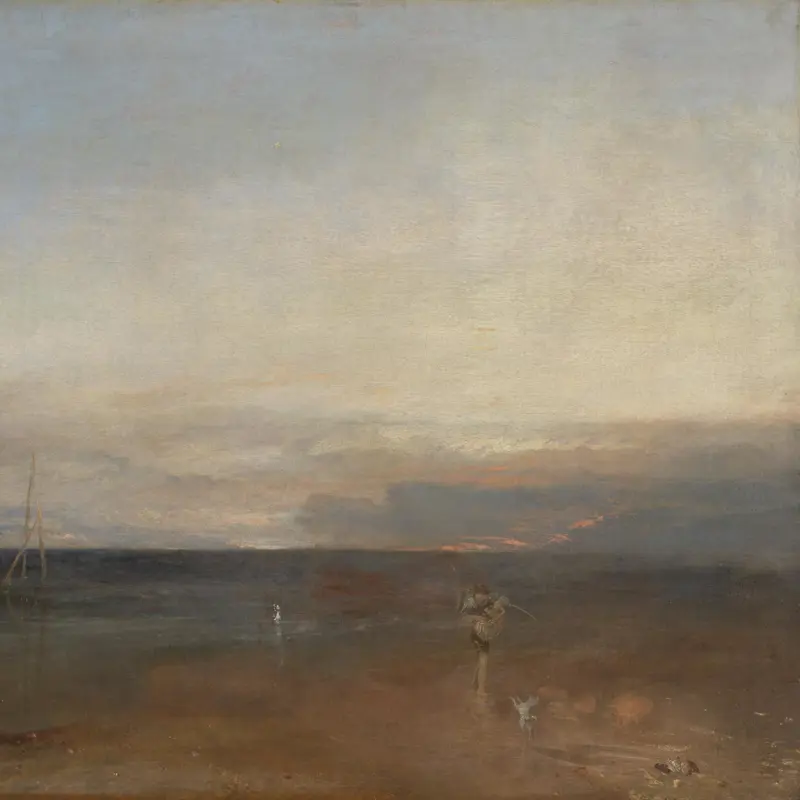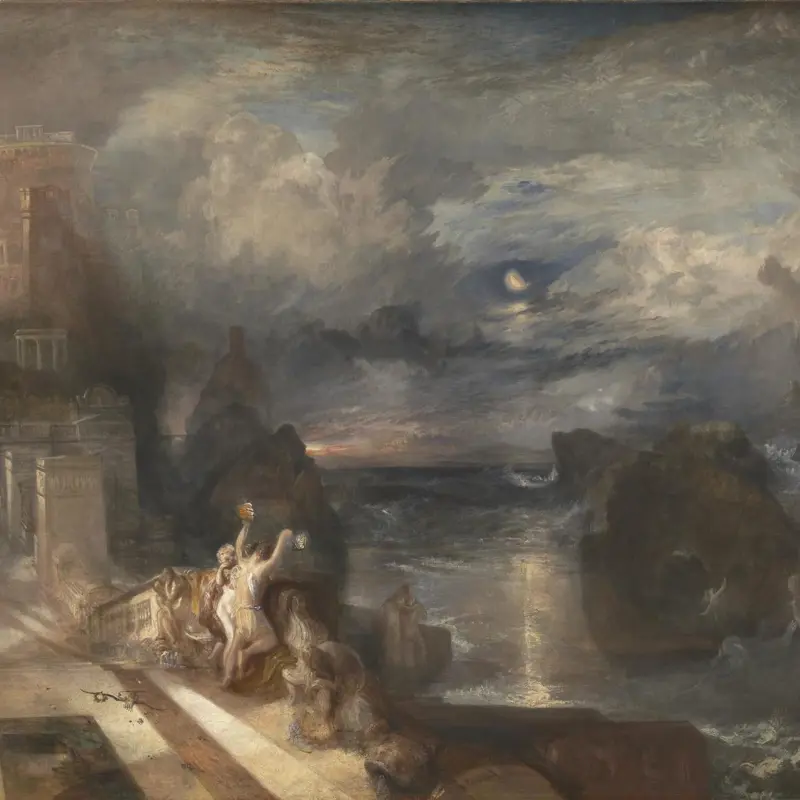Turner is perhaps the best-loved English Romantic artist. He became known as 'the painter of light', because of his increasing interest in brilliant colours as the main constituent in his landscapes and seascapes. His works include water colours, oils and engravings.
Turner was born near Covent Garden in London and entered the Royal Academy Schools in 1789. His earliest works form part of the 18th-century topographical tradition. He was soon inspired by 17th-century Dutch artists such as Willem van der Velde, and by the Italianate landscapes of Claude and Richard Wilson.
He exhibited watercolours at the Royal Academy from 1790, and oils from 1796. In 1840 he met the critic John Ruskin, who became the great champion of his work.
Turner became interested in contemporary technology, as can be seen from 'The Fighting Temeraire' and 'Rain, Steam and Speed'. At the time his free, expressive treatment of these subjects was criticised, but it is now widely appreciated.
Turner bequeathed much of his work to the nation. The great majority of the paintings are now at Tate Britain.
This person is the subject of ongoing research. We have started by researching their relationship to the enslavement of people.
Biographical notes
Slavery connections
Subscribed to an investment scheme which relied upon enslaved labour. In 1805, Turner bought one £100 share in the Dry Sugar Work Pen (St. Catherine parish, Jamaica), a cattle farm worked on by enslaved people. Turner would have expected to receive an annual income of at least £15, but the scheme failed in its first year and he lost his investment (S. Smiles, ‘Turner and the slave trade: Speculation and representation, 1805-40’, The British Art Journal , Vol. 8, No. 3 (Winter 2007/8), 47-54). Like many British artists of the time, Turner also had professional relationships with a number of patrons and collectors who were active in British slave ownership and trading and used their wealth to buy and/or commission artworks.
Abolition connections
ODNB states that ‘In 1840 Turner was represented by seven paintings at the Royal Academy, including another of his most famous works, Slavers throwing overboard the Dead and Dying—Typhon coming on (BJ 385; Museum of Fine Arts, Boston, Massachusetts), which is better known as ’The Slave Ship‘. This great icon of the anti-slavery campaign was given by his father as a new year gift in 1844 to John Ruskin, who wrote some of his most stirring passages in its praise, before finding it ’too painful to live with‘ and sending it to auction in 1869. The critics were almost unanimous in reviling ’The Slave Ship‘, and most of Turner’s other 1840 exhibits …’. (Luke Herrmann, ‘Turner, Joseph Mallord William (1775–1851)’, C. Matthew et al. (eds), Oxford Dictionary of National Biography [online], Oxford 1992 -, ] <https://doi.org/10.1093/ref:odnb/27854> accessed 6 August 2021.)
See also Laura Brace, ‘Fallacies of hope: Contesting narratives of abolition in Turner’s Slave Ship’, Atlantic Studies, vol. 17, no. 4, 2019, 441-461 <https://doi.org/10.1080/14788810.2019.1669419>; John McCoubrey, ‘Turner’s Slave Ship: Abolition, Ruskin, and reception’, Word & Image, vol. 14, no. 4, 1998, 319-353, <https://doi.org/10.1080/02666286.1998.10443961>.
National Gallery painting connections
Donor: the Turner Bequest comprised 100 finished pictures, 182 unfinished pictures and 19,049 drawings and sketches in colour and pencil. The majority of the bequest was transferred to the National Gallery of British Art [Tate] in 1897.
The following paintings from Turner’s Collection, donated via the Turner Bequest, have remained at the National Gallery: NG472, NG479, NG498, NG508, NG521, NG524, NG538, NG1991, NG1984.
Another painting by Turner is on long loan: L297.
Bibliography
L. Herrmann, 'Turner, Joseph Mallord William', in C. Matthew et al. (eds), Oxford Dictionary of National Biography, Oxford 1992-, https://doi.org/10.1093/ref:odnb/27854
Checked and found
—
Item on publisher's website
History of Parliament Trust (ed.), The History of Parliament: British Political, Social & Local History, London 1964-, https://www.historyofparliamentonline.org/
Checked and not found
—
Item on publisher's website
UCL Department of History (ed.), Legacies of British Slave-ownership, London 2020, https://www.ucl.ac.uk/lbs/
Checked and not found
—
Item on publisher's website
A. Wilton, 'Turner, J(oseph) M(allord) W(illiam) ', in J. Turner et al. (eds), Grove Art Online, Oxford 1998-, https://doi.org/10.1093/gao/9781884446054.article.T086656
Checked and found
—
Item on publisher's website



